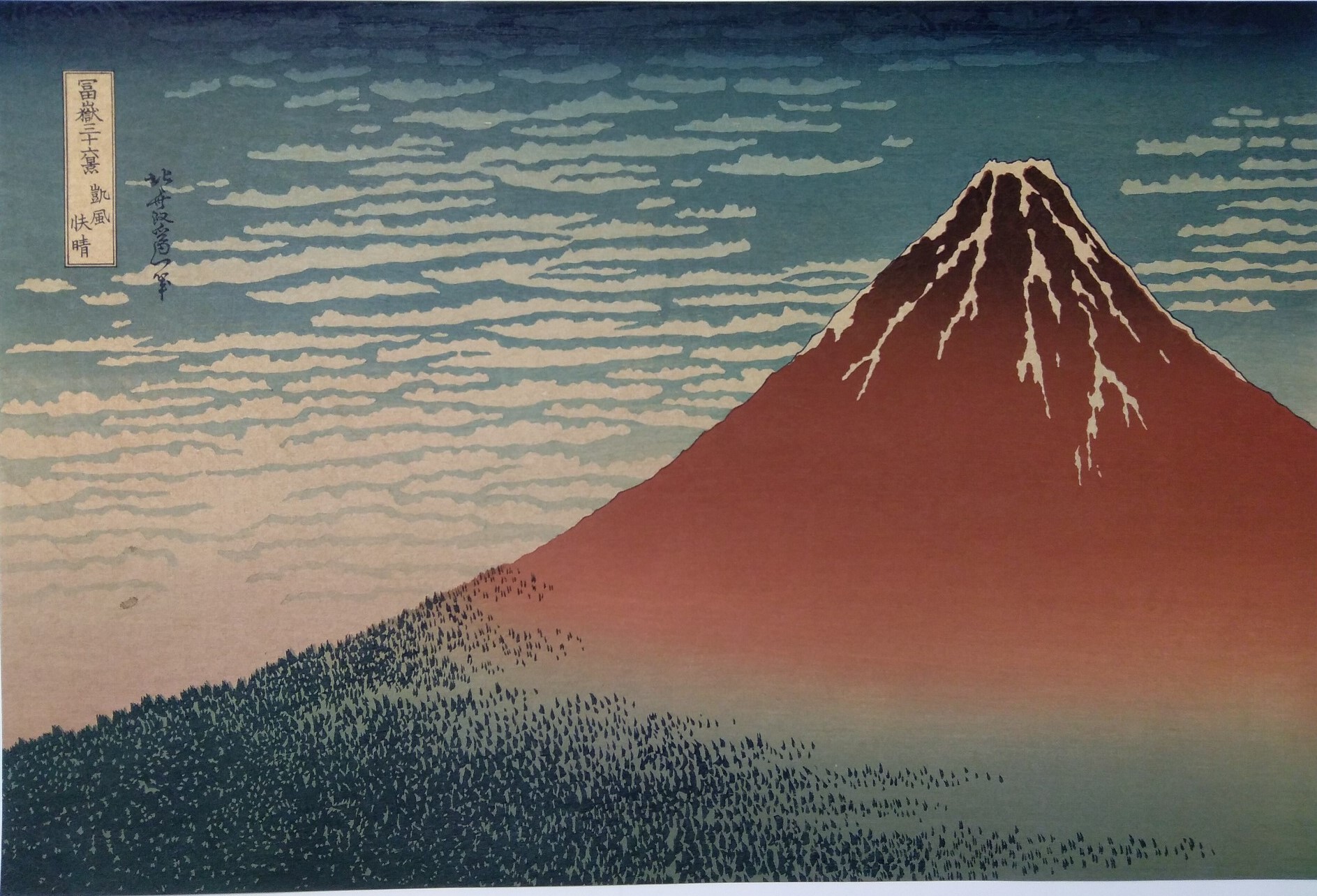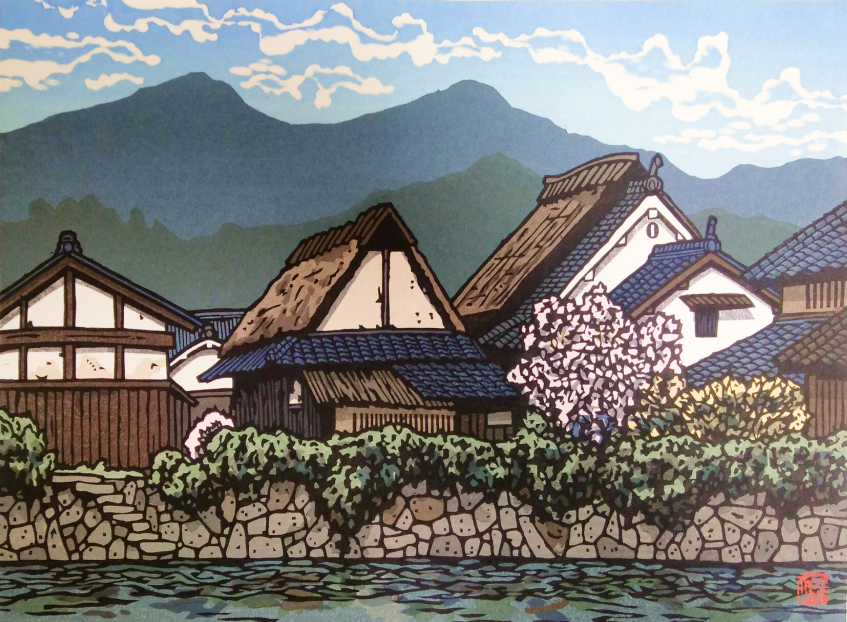


Good colors and saturation. Any rearkable stain except for a spot on the central-lower left area. No wrinkles nor crease. No fixing. It has been trimmed.
Gentle breeze, good weather.
(Gaifū kaisei, 凱風快晴), also known as Red Fuji.
And early autumn morning view of the Mount Fuji.
Widely known as the Red Fuji for its reddish rock surface it is actually named "Gaifu kaisei" where "gaifu" means gentle breeze and "kaisei" clear weather.
Sharp is the contrast between the upper part and the lower part of the mountain as deep is the symbolism behind them: the upper bare rock is called burning mountain (yakiyama) and represents "that world" (ano yo) where ghosts and spirits move in the afterlife,
while the flourishing forest spreading across the lower part, known as grass mountain (kusayama) represents "this world" (kono yo) where common people live.
The top of mountain is the most sacred place where the Asama Shrine (Asama Daijin) hosts the "Konohana no sakuya hime" deity.
Good colors and saturation. Any rearkable stain except for a spot on the central-lower left area. No wrinkles nor crease. No fixing. It has been trimmed.
| Price | |
|---|---|
| Series | Thirty six views of Mount Fuji. (Fugaku sanjuroku kei, 富嶽三十六景). |
| Author | Katsushika Hokusai (葛飾北斎) |
| Size | Large (ōban, 大判). |
| Publisher | / |
| Number | 9/53 |
| Genre | Meisho-e (名所絵), fūkei-ga (風景画). |
| Period | Probably a 1930`s reproduction. |
| Trimmed | Yes |
| Backed | No |
| Code | KSHS01001 |
